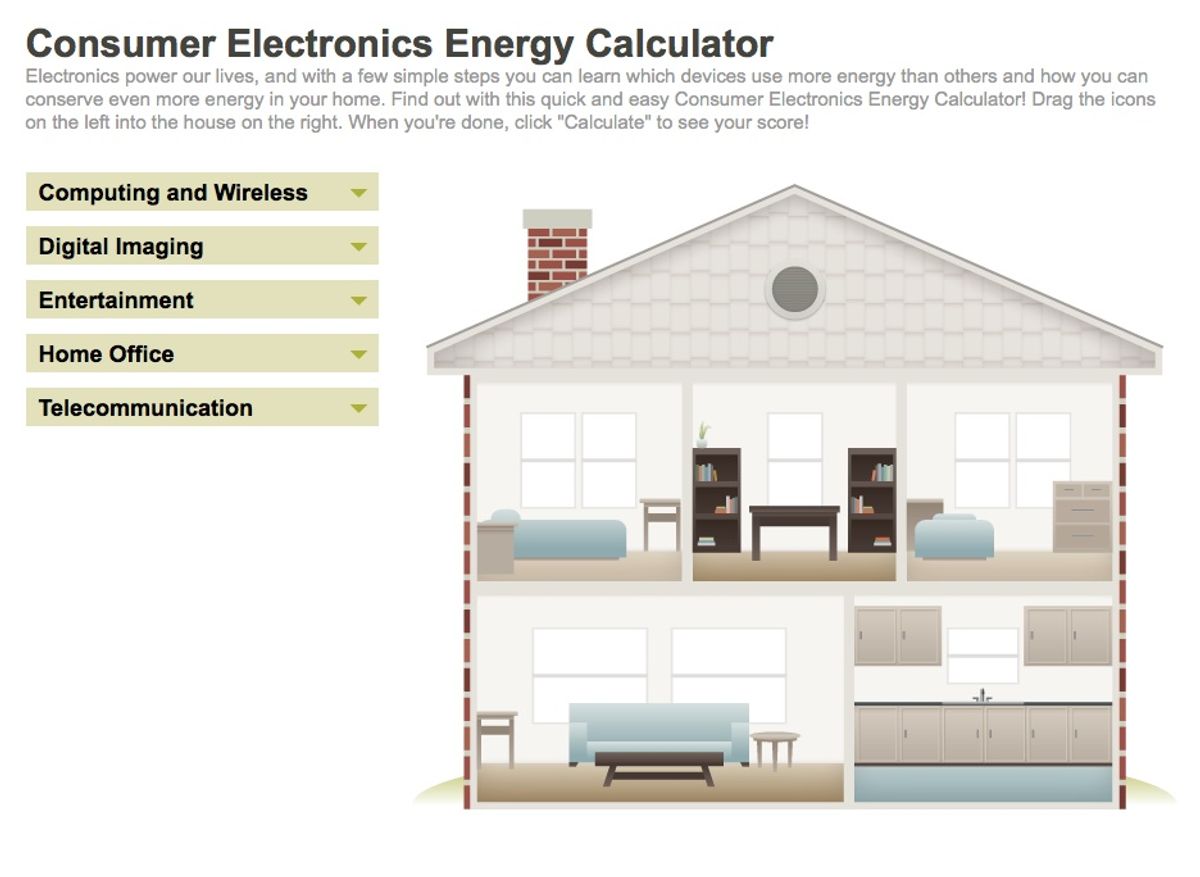On the downside, the calculation is rough in the extreme. By breaking flatscreen TVs into only three groups (small, medium, and large), for example, the calculator minimizes the number of steps you need to take, and information you need to have. I get that people are not going to go through their homes and note brands and model numbers, but surely most of us know the screen sizes of our televisions within a couple of inches, or whether they're LED-lit LCD, fluorescent-lit LCD, or plasma—design differences that make an enormous difference in power consumption.
After going through the calculations for my home, I discovered that the biggest power-eater is the computers and other gear needed to keep me connected to the Internet (I wish it had broken down that category a bit; I can shut down a computer without unplugging the wireless router), sucking up 42 percent of the total electricity that goes to consumer electronics each month, and that the entire cost of running all my consumer electronics gizmos in a month is under $8. Does this make me want to run out immediately and replace my one remaining CRT TV with a flat panel, or be more vigilant about unplugging the kids’ laptops after they leave in the morning (two suggestions the calculator made to me)? Uh, not really. In fact, I don’t think this was the intent of the calculator, but it reassured me that my consumer electronics footprint is pretty small. I’d save more energy giving up the second fridge that uses about $10 worth of electricity a month—which is not happening anytime soon. This isn’t a surprising reaction; Xerox Palo Alto Research Center researchers Marc Mosko and Victoria Bellotti reported in their Spectrum article "Smart Conservation for the Lazy Consumer" that when participants in their conservation studies learned that computers were even cheaper to run than they had thought, they, like me, concluded that being extremely vigilant about unplugging computers wasn't worth the effort.
Tekla S. Perry is a senior editor at IEEE Spectrum. Based in Palo Alto, Calif., she's been covering the people, companies, and technology that make Silicon Valley a special place for more than 40 years. An IEEE member, she holds a bachelor's degree in journalism from Michigan State University.




